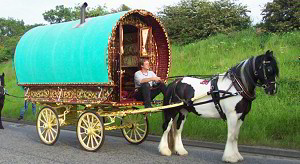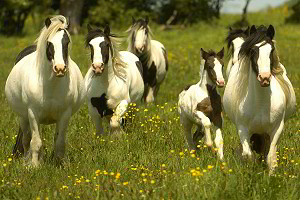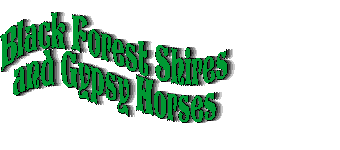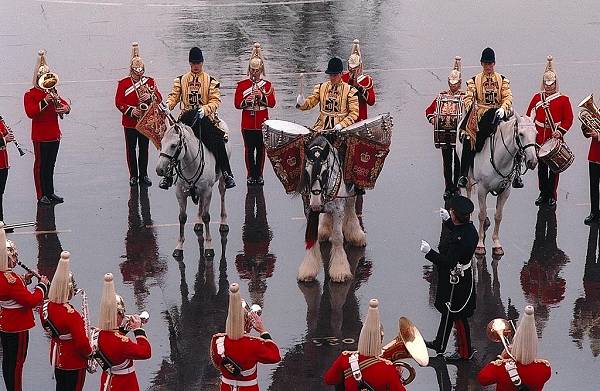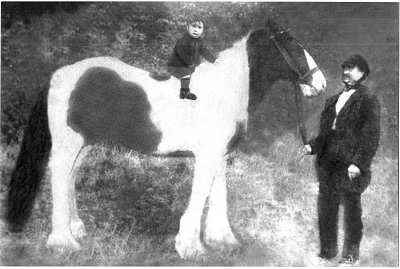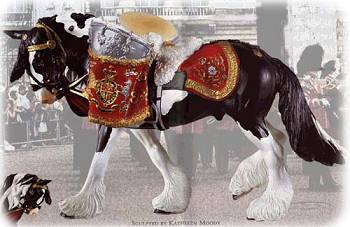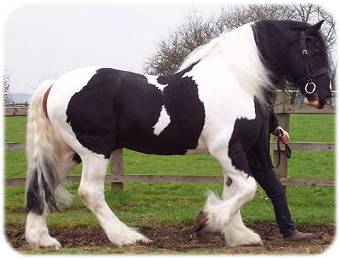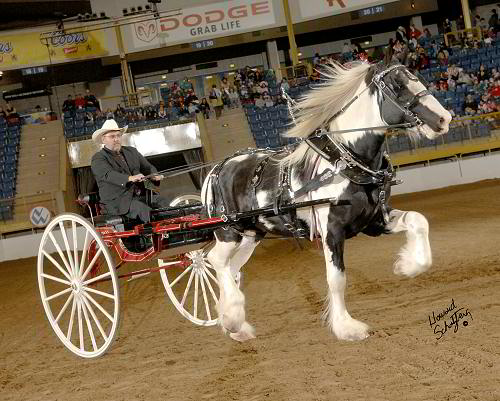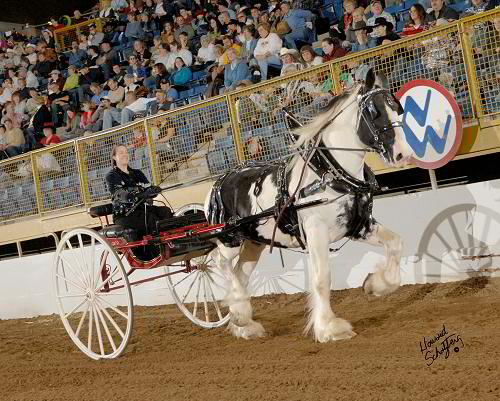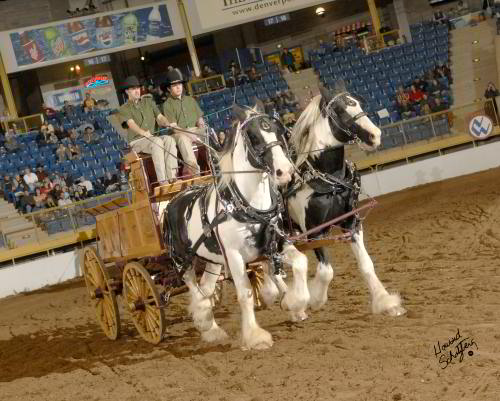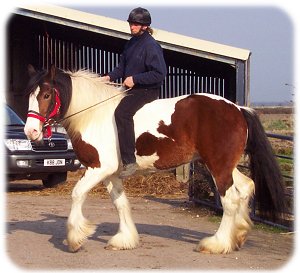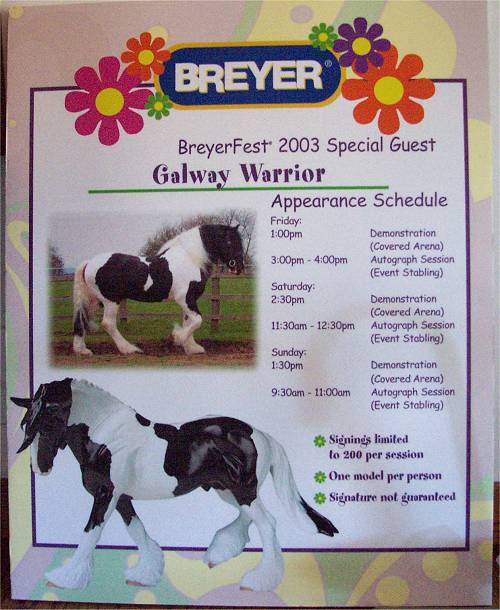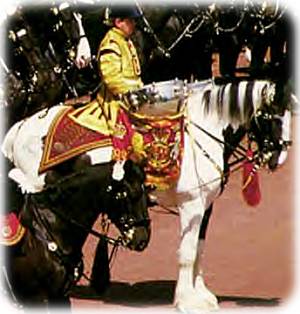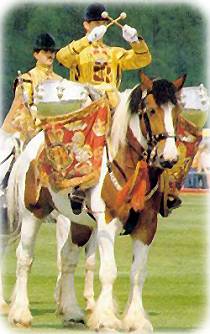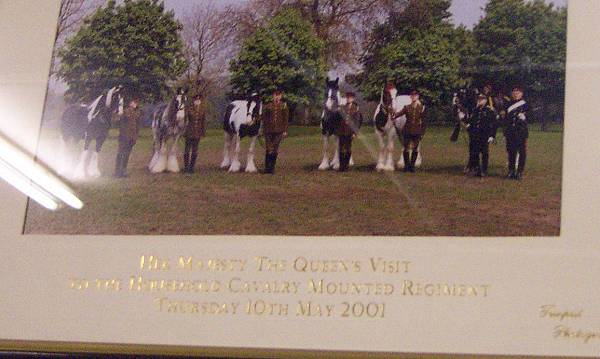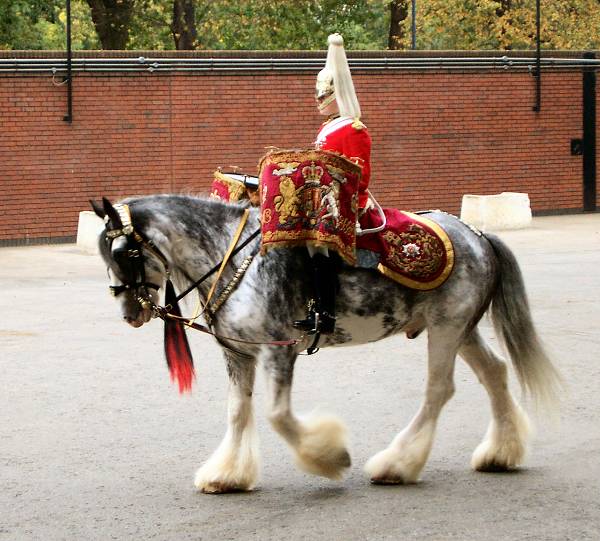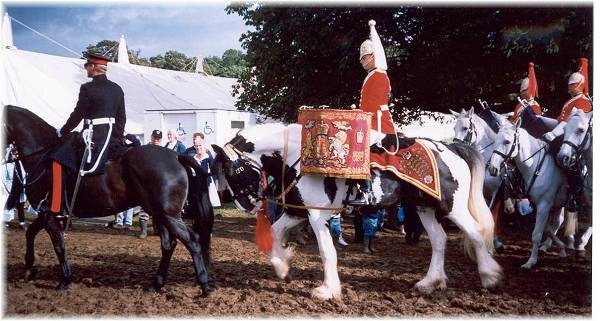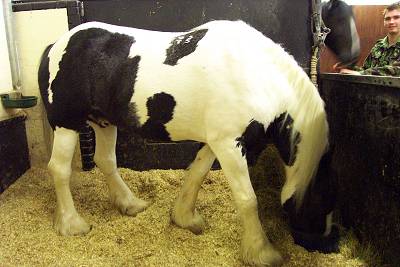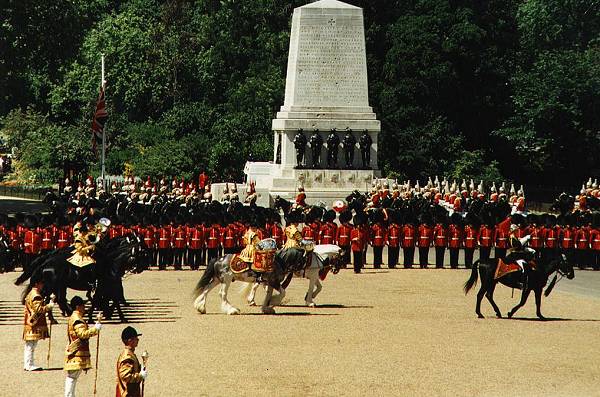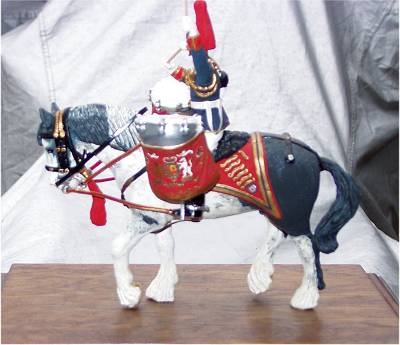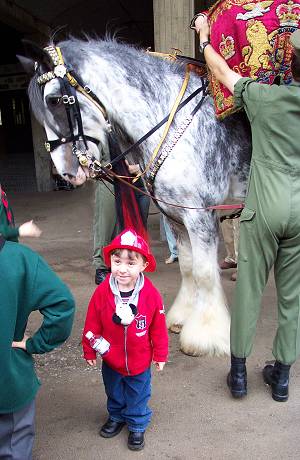|
|
|
Drum Horses What is a Drum horse anyway? If you're lucky enough to have a copy of the book, "All The Queen's Horses", you'll notice that The Drum Horse breed is defined simply as "A colored Shire Horse". More specifically, a colored Shire Horse trained for a specific and highly respected job.
These horses are used by the British regimental Cavalry for parades and events, to carry a drummer and 2 solid silver kettle drums. They are generally over 16.2 hands, although anything with the breed characteristics that is over 16 hands is generally considered a Drum horse. Drum Horses are strong enough to carry the weight of a full grown man along with the two, 90 pound kettle drums, and all accompanying gear (which can weigh upwards of 450 lbs total)! A drum horse must have an exceptional disposition, as they are used in events that would test the character of even the most reliable and steady horse. Drumhorses are controlled only by the feet of the drummer during parades and events, so they have to be incredibly well mannered and very even tempered. Can you imagine most horses parading calmly through the streets of one of the largest cities in the world, with thousands of people and general chaos all around, and doing it all with someone on their back beating two deafening kettle drums?
Drum horses are one of the most-seen, and familiar horses in British Pageantry. No royal procession is complete without at least one drum horse leading the way. Drum horses are extremely rare, with very few being raised anywhere in the world. At one time, colored Shire Horses were common, and could even be registered in the studbook of The Shire Horse Society (UK). The downfall of the colored Shire Horse came when it was decided that the piebald & skewbald colors would no longer be accepted in the registry. It didn't take long for these horses to fall out of favor amongst Britain's breeders. Many of these horses found their way into Gypsy's hands, which made perfect horses to pull the much heavier waggons of the time. These horses provided many of the qualities we see in the modern Gypsy Cob.
It is very rare nowadays to run across Drum
Horses from the original Colored Shire lines, so the breeding practices
used today are aimed towards re-creating that original colored Shire
Horse. We still have the ingredients to create the breed, so
simply need to re-combine them. We use the Gypsy Horse for the
color, and the Shire/Clydesdale for everything else. As we
progress through our breeding practices, we breed back to the
Shire/Clydesdale to bring back the draft horse 'type' and size, while
maintaining the color we originally took back from the Gypsy.
Note: In order for a horse to be a traditional drum horse, it must have feather. Breeding a non-feathered horse to a feathered one will not produce a drum horse. If you breed a gypsy horse stallion to a draft mare without feather, you will get a spotted draft. If you breed a gypsy or drum stallion to light breed mare, you will get a warmblood/sporthorse. It takes several generations for feather to return once it has been bred out. There is a current trend in the US for some dealers to call spotted draft horses "Drum Horses" to try to cash in on the market. Don't be fooled.
Examples of Drum Horses
Galway Warrior, our TRUE British Drum horse (deceased). He was once owned by the Queen of England, and stood in the Royal Stables as a drum horse sire, as well as fulfilling duties as a drum carrier. Galway Warrior is a 3/4 Shire, by the immortal Black Shire stallion Edingale Mascot and a half-shire colored mare. Warrior was 17.1 hands high. Learn more about Galway Warrior by clicking here
In 2003, the Breyer® company selected two horses from us to be immortalized as special event models, and featured as special guests at BreyerFest® that summer. Our Shire mare, Gracie, was the celebration horse, and Warrior made his appearance as well. Breyer made a special model of Warrior in fine, gloss porcelain. A very limited number (appx 750) were made, and they sold out quickly. See more pictures from BreyerFest by clicking here
More pictures of Drum Horses
|
|
|
Drum Horses
Drum Horse Information
|
|
|||||
|
|
|||||
|
|
